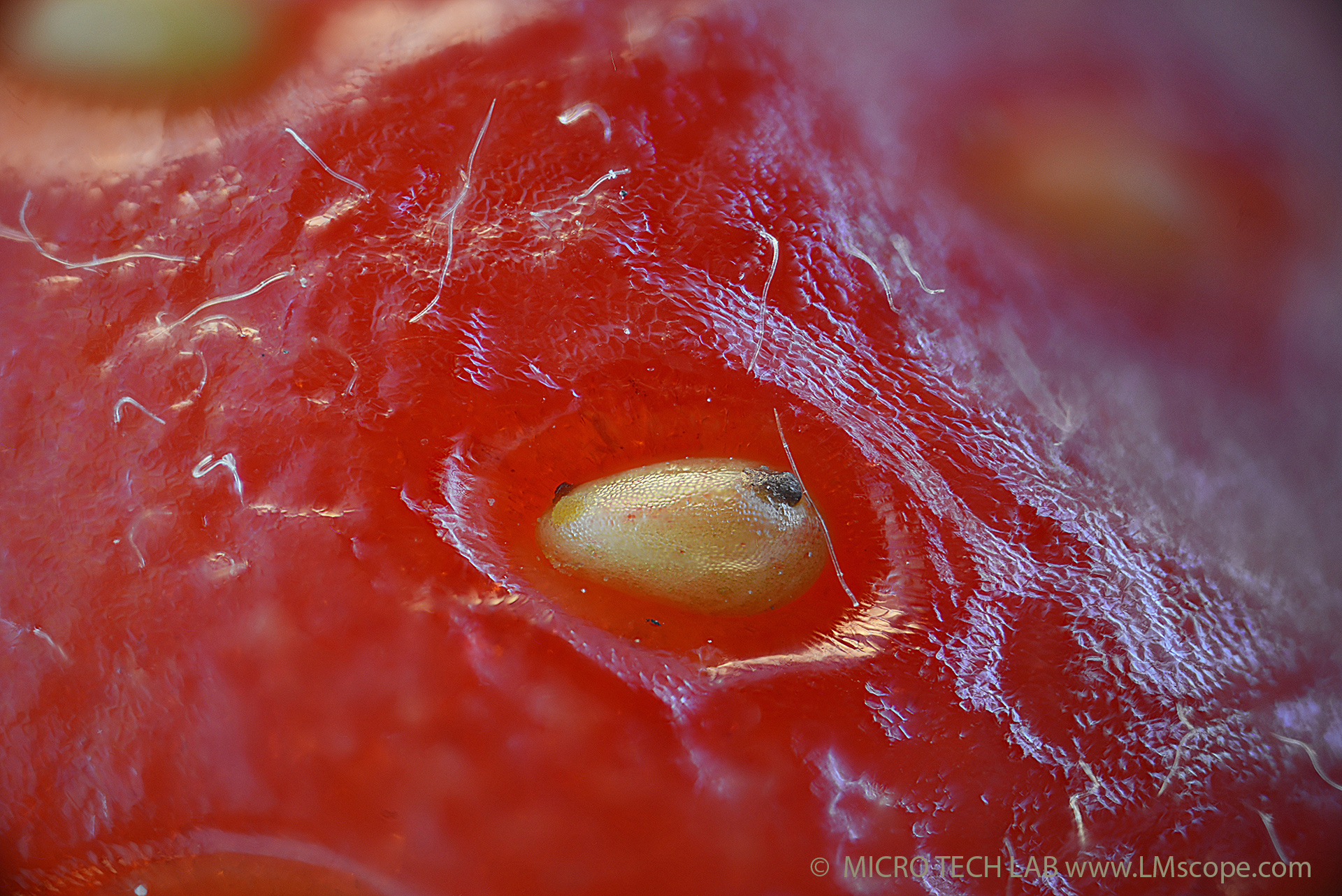Strawberry: a closer look at the seeds

Strawberry: a closer look at the seeds
Strawberry seeds (achenes) captured under the LM photomicroscope
We used a Nikon Z7II and focus stacking (Helicon software, StackShot focusing rail) with the LM photomicroscope to capture this image.
The actual fruits of the strawberry are the small, yellowish to reddish grains or seeds, known as achenes, which are distributed on the surface of the red pseudo-fruit. These achenes are one-seeded closed fruits; the single seed (testa) is attached to the fruit wall at a single point and is enclosed by a dry pericarp (hard-textured fruit wall). The receptacle, formed in spring, is covered with hair-like projections that mature into small “grains” – the actual fruits – on the fleshy part of the strawberry. They do not form a pappus that acts as a parachute to aid in dispersal. Aggregate fruits such as the strawberry, which consists of multiple achenes, are called aggregate fruits of achenes. Animals that eat the strawberry excrete the achenes, allowing the seeds to germinate under suitable environmental conditions.
These seeds can be used to propagate new strawberry plants. The process involves separating the yellow “seeds” from the pulp and drying them before sowing them between January and March. Strawberries are light germinators, which means that the seeds germinate best when they are exposed to light and not buried in the soil. The seeds develop into a plant after two to six weeks at room temperature. However, it is much easier to propagate strawberry plants using offshoots, which are separated from the mother plant after rooting.